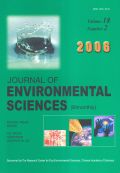Authors: ZOU, Chun-jing | HAN, Shi-jie | QI, Shu-yan | XU, Wen-duo | LI, Dao-tang
Article Type:
Research Article
Abstract:
Picea mongolica W. D. Xu. is an endemic species in China. The spruce forest is only found in semi-arid habitat in Inner Mongolia Autonomous Region of China. Based on the simulative defoliation experiment, it was proved that Picea mongolica seedlings had the compensatory and overcompensatory effects under the certain defoliation rate. The results of variance analysis on growth indexes showed that in PM I (natural regeneration seedlings under Picea mongolica forest), the differences of H_1
…(height in June 23) and H_2 (height in September 3) were extremely significant, and the difference of D(diameter at the breast height) were not significant. In PM II (artificial regeneration seedlings under Betula platyphylla Suk. forest), the difference of H_1 was significant, the difference of H_2 was not significant, and the difference of D was extremely significant. The regression equations were established and the compensatory and overcompensatory points were obtained. In PM I, the compensatory points of H_1 , H_2 , and D were 0.7628, 0.7436, 0.5725, and the overcompensatory points were 0.6056, 0.5802 and 0.2909 respectively. In PM II, the compensatory points of H_1 , H_2 , and D are 0.5012, 0.3421, 0.2488, and the overcompensatory points are 0.4137, 0.2633 and 0.0747 respectively. These results suggested that the induction of compensatory growth mechanisms in spruce seedlings required a threshold level of defoliation, and the insects in Picea mongolica forest could be controlled in a certain degree.
Show more
Keywords: Picea mongolica W. D. Xu, compensate, overcompensate, growth, defoliation rate
Citation: Journal of Environmental Sciences,
vol. 17, no. 2, pp. 232-236, 2005
Price: EUR 27.50





